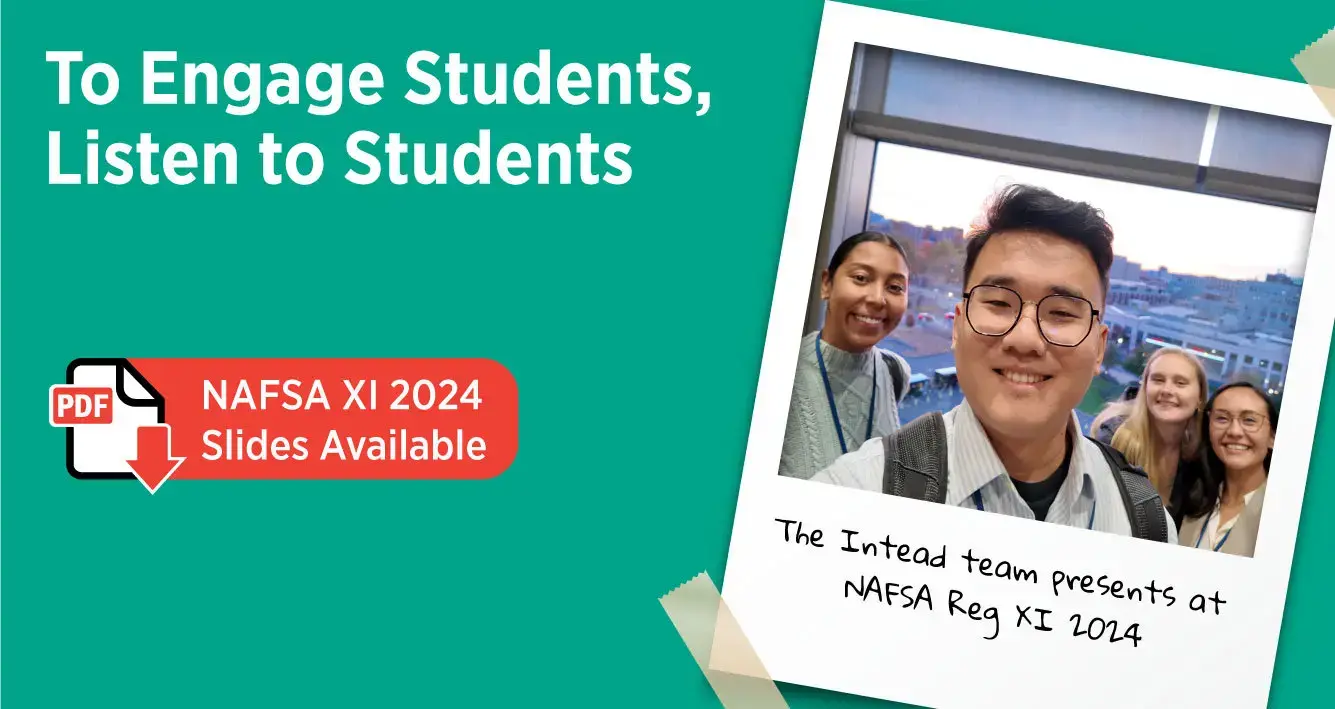When we talk about brand building, especially in the edu space, we often focus on the big strategies: multichannel campaigns, search engine marketing, CRM integration, data analytics. All undeniably important. But what really breaks through to students? Content that feels personal – the kind that makes your target audience feel seen and understood.
Think, an Instagram Reel featuring a current student sharing their journey and pouring a bit of their heart out. A TikTok breaking down the real cost of living on campus and the pride in managing the cost. Stories that help students bring their imagined academic and social experiences to life. Our audience is on the cusp of a new chapter, be it undergrad, grad, or secondary school.
Good content helps them see their future. Great content helps them feel it. Below you can download our case study and use our results as a benchmark as you evaluate your own campaigns.
Meet Intead!
- Find us at NACAC in Columbus in September, NAFSA Reg XI in Springfield in November, and AIRC in Atlanta in December. Be in touch to share a cup of coffee in person.
eBook Reboot: 88 Ways to Recruit International Students 2025 update. Your tactical toolkit for the year ahead. Covering all the bases in 10 quick-read chapters. Fosters great ideation discussions with your team.
We recently worked with a higher ed NGO positioning the UK as a first-choice study destination for US students. The campaign was a success (more on the metrics below). Why? We delivered content that spoke directly to our audience. That, and we brought the conversation to them on the right channels. We made the academic options feel within reach.
The thing about social media is it gives you a chance to kickstart real conversations. What’s campus life like there? What’s the social scene like? What does student support really look like? How hard are the academics, really?
Well-scripted content doesn’t always need polish (though sometimes it helps). The point is: it should be intentional, relatable, and relevant. All that authenticity stuff. If you’re doing it right, you’re not tossing up a Reel and hoping for the best. You’re showing up in the spaces your audience already trusts, with content they actually want to watch.
What made our recent campaign especially effective was the pull-through. As the target audience engaged with the content and wanted to learn more, we extended the conversation across platforms.
In this case, we built connections with students on Instagram and targeted high school counselors via LinkedIn. From there, we directed each audience to tailored pages on the organization’s website, delivering the information we knew they would be looking for -- anticipating their questions.
Understanding your user journey is all about anticipating and responding to the questions they will want answered.
The campaign we ran lasted 8 months and had a media buy budget of just $28k. Want a closer look? Read on to download our quick-hit case study and our benchmarking data…











